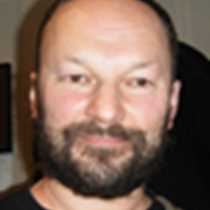Gisborne: Te Pahou Marae Visit
Today our guests were treated to a warm welcome at Te Pahou Marae, the living heart of the community for the Ngati Maru people of Manutuke. The small village of Manutuke is located just outside of Gisborne, on the East Coast of New Zealand’s North Island. Ngati Maru are a hapu (sub-tribe) of the Rongowhakaata iwi (tribe) one of the important Maori tribes of the Gisborne area. The Gisborne area is a major centre for Maori, the indigenous Polynesian people of New Zealand, or Aotearoa as it is known in the Maori language.
Our local guide, Anne McGuire, is related to most of the local tribes and was therefore able to arrange a visit to a place not normally frequented. Te Pahou is a marae, a community centre for traditional Maori communities. The Ngati Maru people use their marae for funerals (tangi), meetings, social gatherings and as a basis for the school they have set up for their children. The school is a Kura Kaupapa, or full immersion Maori language school for children. These schools have been set up by Maori themselves in an attempt to preserve the Maori language (te reo Maori), which is threatened by the onslaught of English. Ngati Maru welcomed us to their marae, but it was our privilege to be there. This place is a people’s community space, rather than an operation set up for tourists.
Our party was welcomed on to the marae in a traditional manner. We were called on to the marae by a karanga (chant) from one of the women of Ngati Maru, to which our guide Anne answered on our behalf. Inside we were met by a haka, a war dance or dance of challenge, from the children of the local Kura Kaupapa school. We were then welcomed by a speech in Maori from Taharakau Stewart, a teacher at the school and a local Ngati Maru expert. Taharakau shares his name with the ancient ancestor whose name is also given to the meeting house (wharenui) to which we had been invited. Taha spoke to us in Maori, but later, after the formal part of the welcome was concluded, explained his speech to us in English. Taha’s speech was followed by a song (waiata) of support from the school children. We replied with two speeches, one by me (in Maori) and another from Mike (in English), each of which was supported by fine singing from the assembled Linblad guests.
Taha then explained the gist of his welcoming speech. He related some of the local ancestral stories, including the naming of the area Manutuke. This name came from an ancestor who rode a gigantic bird to New Zealand, bringing with him the kumara of sweet potato. Taha and Anne also told us the history of the meeting house itself, why only the outside had carvings and the meaning of the woven panels on the walls. The house had originally been a dance hall, but following a vision one of the elders had, it was declared that the hall was meant to be transformed into a meeting house.
After learning about the house, we had the privilege of hearing the children (tamariki) of the Kura Kaupapa perform a number of action songs and a haka (a war dance). These songs and dances all relate to the history and identity of the Ngati Maru people. While they were performed in the Maori language, the intensity of the performance was abundantly clear and they were met with a standing ovation. The children replied to the ovation with a song about Paikea, the whale rider, one of their ancestors who is said to have come to New Zealand from across the Pacific on the back of one of his ancestors, a whale.
The visit was concluded with a substantial morning tea, and a question and answer session with Anne, about aspects of Maori culture. Anne made it clear that a vital part of the culture is the passing on of knowledge from the past, to the new generation who are now learning and nurturing the language and culture. We parted from Te Pahou with the feeling that the young generation were indeed taking on the culture of their ancestors with a great deal of hope for the future.
After this moving experience, the rest of our day was spent in a fairly relaxed manner. We set out on a visit to the National Arboterium at Eastwoodlands, followed by a trip to the Bushmere winery, where we sampled some fine locally produced wines. An enjoyable conclusion to a day where we caught a glimpse of the traditions and culture of the original people of Aotearoa.




